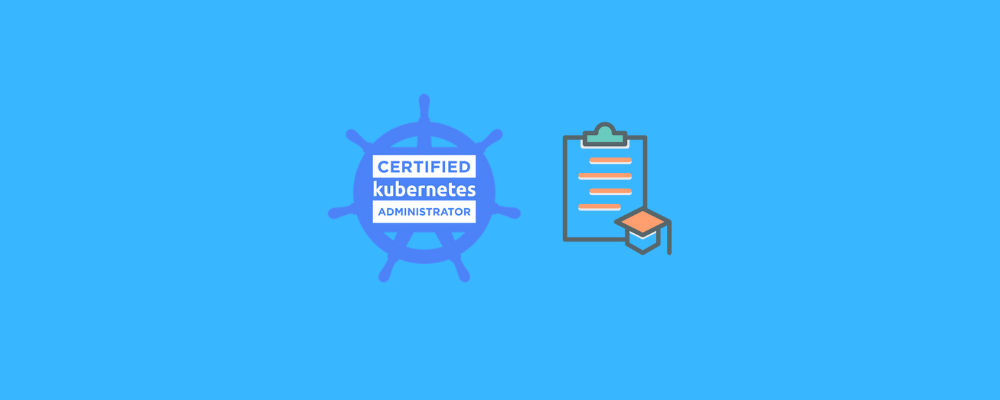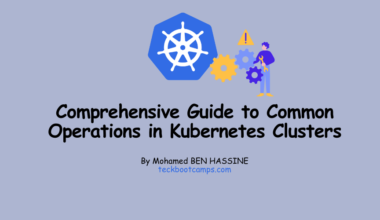Here, we will be discussing the Kubernetes CKA Exam Syllabus official and useful resources that can be used to prepare for each topic of the CKA exam.
| Topic | Weightage |
| Cluster Architecture, Installation & Configuration | 25% |
| Services & Networking | 20% |
| Troubleshooting | 30% |
| Workloads & Scheduling | 15% |
| Storage | 10% |
Cluster Architecture, Installation & Configuration 25%
This section of the Kubernetes CKA Exam Syllabus will account for 20% of the questions in the actual exam.
As the name implies, you must be familiar with Kubernetes cluster administration. Of course, you must be familiar with and understand its architecture, as well as how to install and configure it.
Manage role based access control (RBAC)
Role-based access control is a method of managing application or individual user access levels. It’s a useful tool in an administrator’s toolkit for granting fine-grained controls to others.
You should know how to create, modify and delete RBACs.
Use Kubeadm to install a basic cluster
According to the official documentation, the kubeadm cluster creates commands and their associated parameters.
You should be able to operate the kubeadm tool to set up a Kubernetes cluster.
Manage a highly-available Kubernetes cluster
Even though there will be no HA questions on the CKA exam, it is useful to understand the high availability architecture.
The main idea here is to understand how to add nodes to the cluster and configure it to be highly available.
Provision underlying infrastructure to deploy a Kubernetes cluster
The main goal here is to be able to lay the groundwork for a Kubernetes cluster installation (network, storage, dependencies, etc.)
For kubernetes to work, you need to have
- Certain system configurations
- Container runtime (CRI-O, Containerd, or Docker)
- kubeadm
- kubelet and kubectl
Perform a version upgrade on a Kubernetes cluster using Kubeadm
In the exam, you will be asked to upgrade a Kubernetes cluster using Kubeadm.
Implement etcd backup and restore
You should learn and practice using the etcdctl utility to backup and restore etcd.
Etcd is the cluster’s key-value store. All cluster configuration and information about pods, services, and so on are stored in key-value format here.
Workloads & Scheduling 15%
This section of the Kubernetes CKA Exam Syllabus will account for 15 % of the questions in the actual exam.
As an orchestrator, Kubernetes is notable for its scaling and system resource management capabilities. To ensure the availability of its applications, the administrator must understand the concepts that enable this feat, as well as how to technically configure them.
Understand deployments and how to perform rolling update and rollbacks
Kubernetes Deployment ensures that an application has a minimum number of replicas running at all times. In the event that a replica fails, the Kubernetes API ensures that a new one is created within minutes.
In the Exam , you should know how to do rollbacks and rollouts of deployments.
Use ConfigMaps and Secrets to configure applications
Configmaps in Kubernetes are useful for storing non-critical data in key-value pair format. They can also be used to inject environment variables into pods.
In the Exam , you should knwo how to use configmaps and secrets objects to create, modify, and delete variables and secrets and make them available to a pod.
Know how to scale applications
Kubernetes offers a variety of ways to scale applications, including the use of deployment objects to increase the number of replicas of your application.
Horizontal Pod Autoscalers (HPAs) can be used to increase the number of replicas based on application metrics.
For the Exam , you should be able to scale a pod/deployment. You can follow this tutorial.
Understand the primitives used to create robust, self-healing, application deployments
For any self-healing application, you should use deployments or stateful sets so that when pods fail, Kubernetes instantly recreates them.
Deployments also allow you to keep track of all the changes you make. You can also easily return to a previous state.
Understand how resource limits can affect Pod scheduling
Cluster management also includes workload management; as an administrator, you should ensure that each pod has access to resources based on its requirements.
Each pod in kubernetes can be assigned a minimum and maximum CPU and memory usage.
Awareness of manifest management and common templating tools
This section assumes you’re familiar with tools like kustomization, helm, and so on.
In general , during the Exam , you should be able to create, modify and apply Kubernetes manifests
Services & Networking 20 %
This section of the Kubernetes CKA Exam Syllabus will account for 20% of the questions in the actual exam.
Elements are made to communicate within a Kubernetes cluster, flows are routed, and endpoints are exposed. This section focuses on the various Kubernetes network concepts.
Understand host networking configuration on the cluster nodes
Kube-proxy is a component that must be installed on each worker node in order for pods to communicate with one another. Kube proxy participation is required for node networking.
Kubelet is the process by which a worker node communicates with the master node. All of these concepts are required to comprehend networking within Kubernetes.
Understand connectivity between Pods
Pods communicate with one another via services. This is made possible by the Kube proxy component.
Understand ClusterIP, NodePort, LoadBalancer service types and endpoints
Understanding each service type and their use cases is critical. Understanding how pods can be added to a service should be given special consideration.
Know how to use Ingress controllers and Ingress resources
External entities are granted access to internal cluster services via ingress resources. Ingress controllers are load balancers that enable it.
For the Exam , you should know how to create and configure Ingress Understand Ingress Controllers
Know how to configure and use CoreDNS
CoreDNS is a highly adaptable and extensible DNS server that can act as the Kubernetes cluster DNS. The CNCF hosts the CoreDNS project, as it does Kubernetes.
Choose an appropriate container network interface plugin
The Container Networking Interface (CNI) aims to develop a generic plugin-based networking solution for containers.
For the Exam , you should Know how to choose a CNI according to your needs.
There are numerous options, including Flannel, Calico, and others.
The network section accounts for 20% of the exam’s content. You’ll almost certainly be asked to create at least one network policy, endpoint, or ingress.
Storage 10%
This section of the Kubernetes CKA Exam Syllabus will account for 10% of the questions in the actual exam.
Storage management questions make up 10% of the exam content. Understanding how to create storage spaces and provide them to pods may appear simple, but it requires knowledge of several terms and mechanics.
Understand storage classes, persistent volumes
Understand volume mode, access modes and reclaim policies for volumes
Understand persistent volume claims primitive
Know how to configure applications with persistent storage
By mounting a PVC, application pods can use persistent storage.
Troubleshooting 30 %
This section of the Kubernetes CKA Exam Syllabus will account for 30% of the questions in the actual exam.
The ability to solve problems is the most important skill of an administrator. Kubernetes is a fairly complex factory whose mechanics and the location of relevant failure information must be understood. You will be required to perform live debugging during the exam.
Evaluate cluster and node logging
Application logs can aid in understanding the application’s activities and status. The logs are especially useful for troubleshooting and monitoring cluster activity.
Examining logs of Kubernetes control plane components such as etcd and the scheduler can also be very beneficial.
Understand how to monitor applications
Monitoring applications can be accomplished by storing logs and analyzing application metrics.
Tools like Prometheus and Grafana are popular because they make metric management simple.
Manage container stdout & stderr logs
Troubleshoot application failure
Administrators should also assist users in debugging applications that have been deployed into Kubernetes but are not behaving correctly.
Troubleshoot cluster component failure
When users are confident that their application is properly configured, cluster components must be debugged and troubleshooted for failures.
Troubleshoot networking
There may be instances where things go wrong on the network end, such as incorrect configuration of ingress resources.



